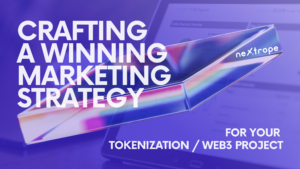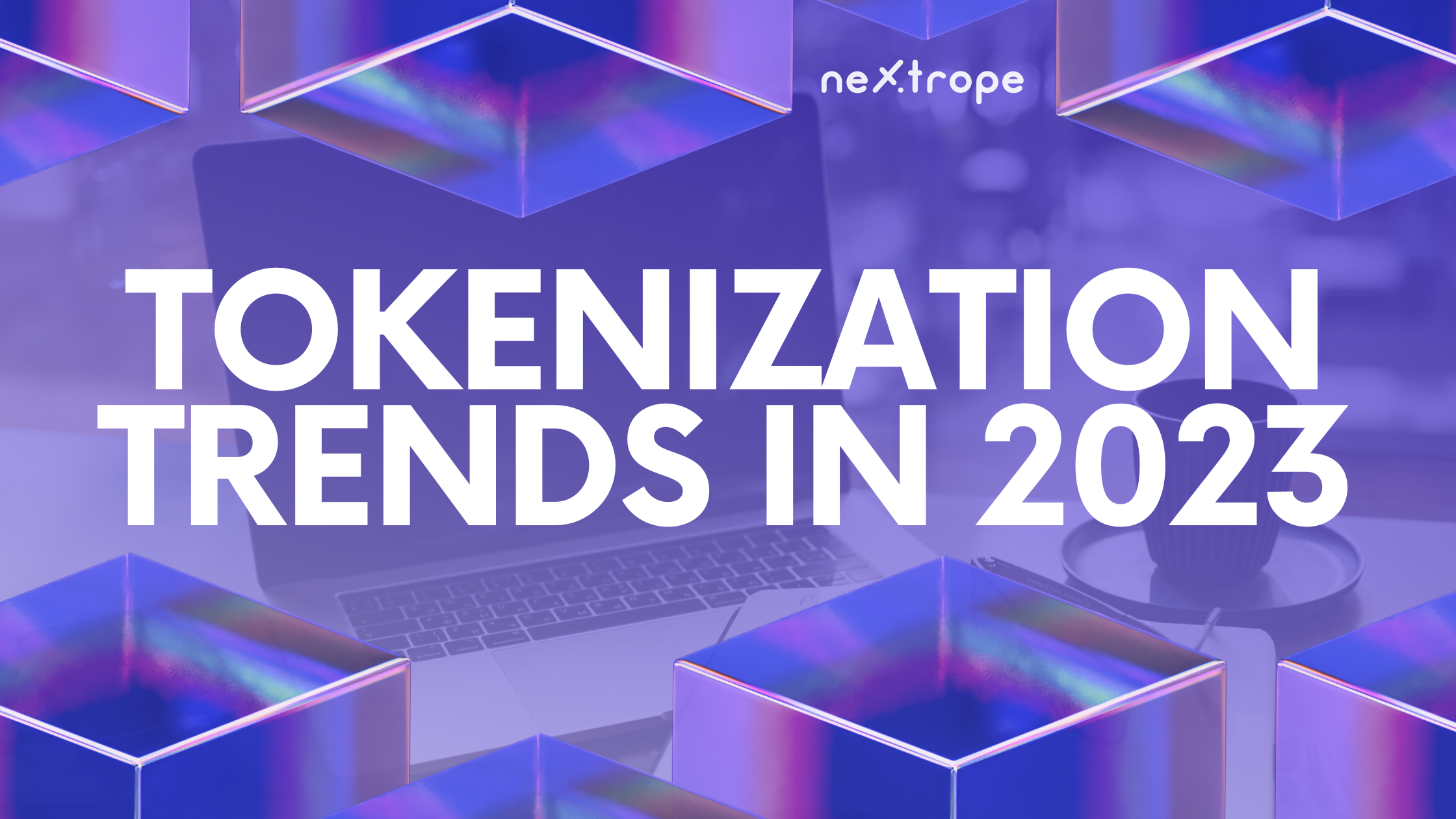As blockchain, artificial intelligence (AI), and cryptocurrencies continue to develop rapidly, tokenization and Web3 projects have been garnering substantial interest. These groundbreaking initiatives present remarkable prospects for businesses to revolutionize industries, enhance processes, and reveal previously untapped potential. Nonetheless, a meticulously crafted marketing strategy is essential for thriving in this highly competitive domain.
The goal of this article is to assist you in devising a top-notch marketing strategy tailored specifically for your tokenization/Web3 project. We will delve into the principal components that constitute a successful marketing campaign, while accounting for the distinct nature of these initiatives. By adhering to the methodologies described here, you can optimize your project's visibility, engagement, and overall triumph.
- Understanding the Tokenization and Web3 Landscape
- Targeting Audience Definition
- Establishing Transparent Objectives and Key Performance Indicators (KPIs)
- Developing Your Distinctive Value Proposition
- Establishing a Captivating Online Presence
- Implement Performance Marketing Strategy in Web3
- Conclusion - Marketing strategy in Web3
- Nextrope Tokenization Launchpad Platform
Understanding the Tokenization and Web3 Landscape
Tokenization
Tokenization entails converting tangible or digital assets into distinctive tokens within a blockchain framework. These tokens may symbolize various assets such as real estate, artwork, intellectual property, or asset fractional ownership sharing. Blockchain technology application in tokenization facilitates fractional ownership support, augmented liquidity, and transparent transactions.
Discover Our Tokenization Launchpad
Web3
Web3, colloquially known as the decentralized web, signifies the internet's evolution that incorporates decentralized technologies like blockchain, smart contracts, and peer-to-peer networks. Its objective is to bestow users with authority over their data by excluding intermediaries and enabling direct peer-to-peer connections. Web3 epitomizes a fundamental transformation towards a more accessible, transparent, and user-driven internet.
Present-day Tendencies and Expansion in the Tokenization Sector:
- Growing Acceptance - The tokenization sector has witnessed considerable expansion and adoption across various industries such as real estate, finance, supply chain management, and gaming. An increasing number of businesses are acknowledging the potential advantages of tokenization like enhanced liquidity, fractional ownership opportunities, and facile asset transfers.
- NFTs and Digital Collectables - Non-Fungible Tokens (NFTs) have prominently risen as a major application in the tokenization arena. NFTs facilitate the possession and exchange of distinctive digital assets like art, music, virtual real estate, and collectibles. The escalating interest and high-profile sales of NFTs have drawn more attention to the tokenization industry.
- Decentralized Finance (DeFi) - The decentralized finance (DeFi) sector's growth has also been heavily influenced by tokenization. DeFi platforms harness blockchain and tokenization to provide decentralized services like lending, borrowing, and trading. The DeFi ecosystem has seen impressive growth, drawing the attention of both institutional and individual investors.
Process - Marketing Strategy for Your Web3 Project
Targeting Audience Definition
For a successful tokenization/Web3 project marketing strategy, clear target audience definition is essential. This enables you to cater your messaging, channels, and methods to those most likely to be intrigued by and benefit from your project. Follow these main steps for defining your target audience:
Pinpointing Ideal User Personas
- Investigation and Assessment
Conduct comprehensive research to grasp the potential users' traits, preferences, and behaviors for your tokenization/Web3 project. Take into account factors like age, gender, location, and professional history. Delve into their motivations, obstacles, and aspirations associated with tokenization and Web3 technologies.
- Audience Segmentation:
Divide your target audience according to common attributes, requirements, and behaviors. You might have groups such as blockchain enthusiasts, investors seeking new asset classes, or companies aiming to utilize tokenization for better efficiency. Distinct marketing approaches may be needed for different segments due to unique needs and motivations.
Developing a Target Audience Profile
- Challenges and Motivations:
Comprehend the issues, pain points, and motivations concerning tokenization and Web3 projects that your target audience encounters. This understanding enables you to adapt your messaging and positioning to align with their aspirations and necessities.
- Preferred Communication Channels:
Identify which communication channels are preferred by your target audience. Are they actively involved in social media networks or online forums? Or do they attend industry events? Knowing their channel preferences will help you allocate resources effectively.
Establishing Transparent Objectives and Key Performance Indicators (KPIs)
For gauging the success of tokenization/Web3 project marketing initiatives, it is vital to create transparent objectives and determine key performance indicators (KPIs). By setting quantifiable targets and monitoring pertinent data, you can assess the efficacy of your marketing approach. Here are the steps for formulating objectives and KPIs:
Setting Targets in Line with Vision and Mission
- Defining Specific Objectives:
Ascertain the precise outcomes you want from your marketing endeavors. Examples of these goals may be raising user adoption, acquiring qualified leads, augmenting brand recognition, or promoting token sales. Guarantee that your objectives are in harmony with your project's vision and mission.
- Establish Goals as Quantifiable:
Provide a numerical value to your objectives, rendering them quantifiable. For example, rather than a vague goal like "boost user adoption," indicate a specific figure or percentage, like "enhance user adoption by 20% within six months."
- Design Realistic Timeframes:
Formulate practical timeframes to reach your objectives. Take into account your project's timeline, industry tendencies, and resources allocated for marketing operations. Divide long-term objectives into smaller achievements for more effective tracking and evaluation.
Determining Relevant Key Performance Indicators (KPIs)
KPI is an acronym for key performance indicator. KPIs measure performance and progress toward a specific goal over time. They help keep the primary goals of a business at the forefront.
- Metrics for User Engagement:
Gauge user interactions with marketing campaigns and materials. KPIs can comprise data such as website visits, page views, bounce rates, time spent on the site, social media engagement (likes, shares, comments), and email open and click-through rates.
- Metrics for Conversion:
Assess user conversion across multiple marketing channels. KPIs may encompass the volume of qualified leads produced, conversion percentages at various customer journey stages, and the proportion of leads transforming into paying clients or token holders.
- Metrics for Brand Awareness:
Measure the prominence and acknowledgement of your tokenization/Web3 project. KPIs can consist of brand mentions, media exposure, social media scope and impressions, search engine standings, and sentiment evaluations.
- Token Metrics:
If relevant, monitor specific data concerning your project's token, like token sales figures, market capitalization, liquidity, and trading volumes on exchanges. These metrics offer insights into market receptiveness and the demand for your token.
Examples of Potential Goals and KPIs for Tokenization/Web3 Projects:
| GOAL | KPIs |
| Boost User Adoption | Total new user sign-ups, active user expansion rate, user retention percentage, growth of token holders. |
| Acquire Qualified Leads | Lead capture volume, conversion rate from lead to customer/token holder, cost per lead acquisition. |
| Augment Brand Recognition | Social media scope and engagement, website visitation rates, media citations, brand sentiment analysis. |
| Promote Token Sales | Token sales figures, total number of token holders, average transaction amounts, trading volumes on exchanges. |
Developing Your Distinctive Value Proposition
For the successful promotion of your tokenization/Web3 project, a powerful and captivating value proposition is crucial. It conveys the unique benefits and features that your initiative provides to prospective users. To create an exceptional value proposition, consider these steps:
Determining the Unique Selling Points (USPs) of Your Project
- Pinpoint Key Characteristics and Benefits:
Examine your tokenization/Web3 project to pinpoint its exceptional features and advantages. Look at how it uses blockchain, AI, and cryptocurrencies for a clear edge over traditional alternatives. Focus on elements like enhanced efficiency, transparency, security, cost reduction, access, or asset ownership democratization.
- Comprehend User Frustrations:
Recognize the difficulties or issues your target audience encounters in relation to the industry or problem your project tackles. Align your USPs with resolving these frustrations and providing solutions that resonate with the needs and goals of your audience.
Emphasizing Blockchain, AI, and Cryptocurrency Advantages
- Focus on Transparency and Trust:
Emphasize the assurance of transparent and immutable transactions through blockchain technology, augmenting trust among users. Clarify how your project employs blockchain to maintain a safe and verifiable record of asset ownership and transactions.
- Highlight Efficiency and Automation:
Demonstrate how your project utilizes AI and smart contracts to streamline processes, lessening manual labor and increasing operational efficiency. Accentuate the cost and time savings possible via automation.
- Advocate for Financial Inclusion and Access:
Accentuate the possibility of achieving financial inclusion and access for traditionally underprivileged populations through cryptocurrencies and tokenization. Exhibit how your project democratizes asset ownership, enabling fractional ownership or investment opportunities previously unattainable.
Establishing a Captivating Online Presence
For your tokenization/Web3 project, it is vital to create a captivating online presence that enables you to connect with your target audience, establish credibility, raise brand awareness, and develop meaningful relationships with prospective users. Consider these strategies to cultivate an engaging online presence:
Construct a Comprehensive Website
Design a visually attractive and user-friendly website that mirrors your project's brand identity.
Convey the value proposition, primary features, and advantages clearly.
Offer educational materials, such as blog posts, tutorials, and FAQs, to inform users about tokenization and Web3 concepts.
Enhance your website's search engine optimization (SEO) to boost organic discoverability.
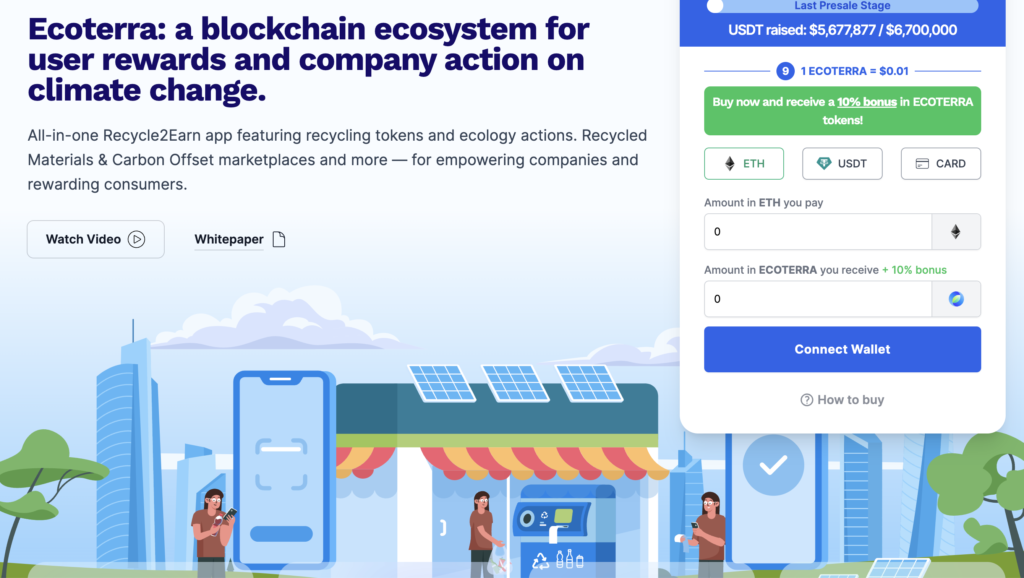
Generate Compelling Content
Create top-notch content that educates, informs, and entertains your target audience.
Compose blog posts, whitepapers, or case studies that demonstrate thought leadership and tackle industry challenges.
Produce captivating videos, infographics, and podcasts to diversify your content offerings.
Encourage user-generated content like testimonials or success stories, enhancing trust and authenticity.
Engage on Social Media
Determine which social media platforms are most popular among your target audience.
Develop engaging posts, updates, and visual content to encourage engagement and sharing.
Interact with your audience by quickly responding to comments, messages, and mentions.
Collaborate with industry experts and influencers for increased reach and cross-promotion.
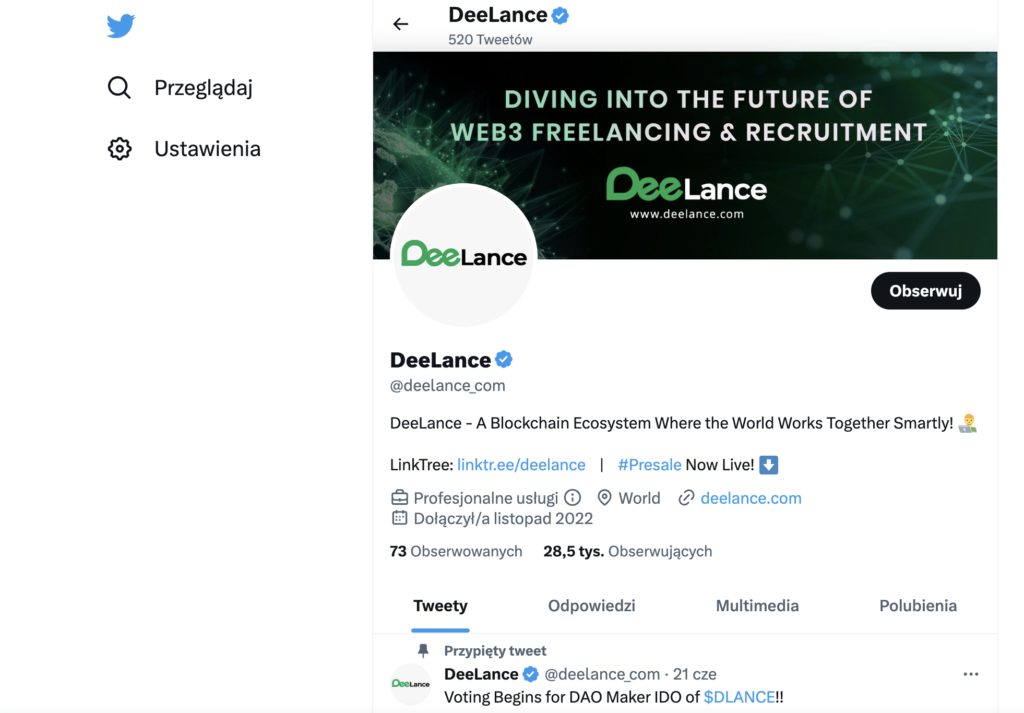
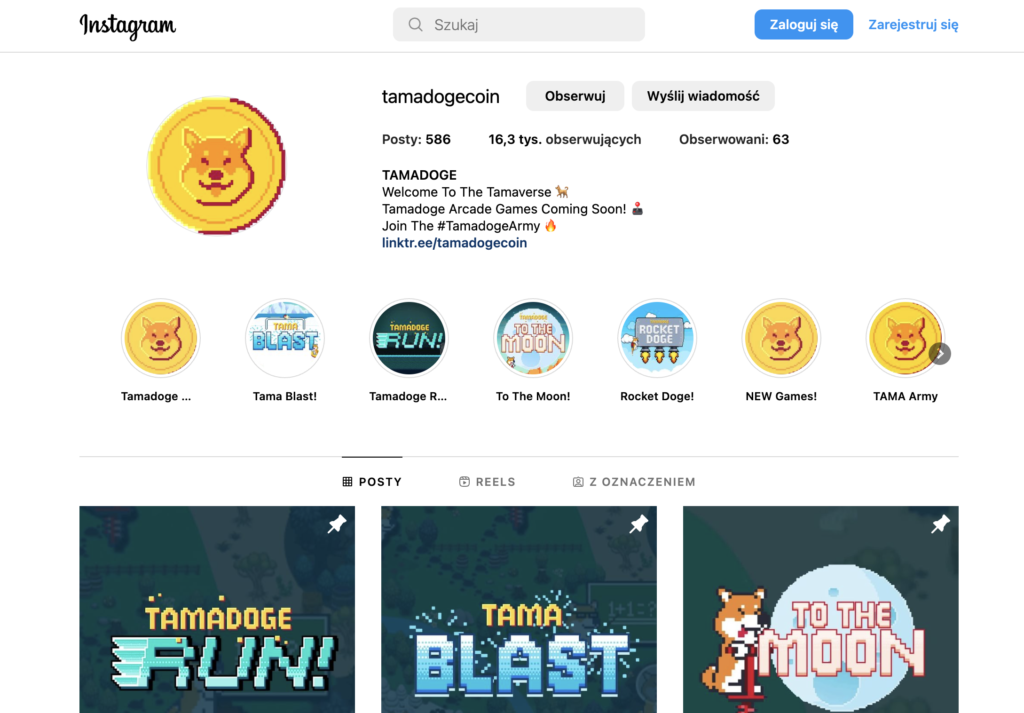
Connect with Online Communities
Participate in relevant online communities, including forums, social media groups, or Slack channels centered around blockchain, Web3, or cryptocurrency topics.
Actively contribute to discussions, provide valuable input, and address questions related to your project's area of expertise.
Establish yourself as a trusted and knowledgeable community member while avoiding overt promotion.
Cultivate a Lively Community
Establish communication and collaboration channels, like dedicated Telegram or Discord groups.
Encourage community members to share their experiences, ask questions, and provide feedback.
Organize events such as webinars or AMAs (Ask Me Anything sessions) for direct engagement with your community.
Recognize and reward active participants to develop a sense of belonging and loyalty.
Implement Performance Marketing Strategy in Web3
Focusing on quantifiable outcomes and adopting marketing strategies based on data and analytics, performance marketing can help optimize ROI. Good marketing strategy helps achieve objectives for your tokenization/ Web3 project. Consider these approaches:
Establish Conversion Tracking
Utilize tools like Google Analytics or Facebook Pixel to track user actions on your website or landing pages.
Monitor conversions like sign-ups, token purchases, or specific actions to assess your marketing campaign's efficacy.
Execute Targeted Advertising Campaigns
Employ social media platforms like Facebook Ads or LinkedIn Ads to reach particular audience segments based on demographics, interests, or behaviors.
Experiment with different ad messaging, targeting options, and creatives to optimize campaigns and boost conversions.
Implement Search Engine Marketing (SEM)
Use paid search advertising tools like Google Ads to rank highly in search engine results for pertinent keywords.
Perform keyword research and refine your ad copy to attract qualified traffic to your website or landing pages.
Capitalize on Email Marketing
Generate an email list of potential customers and interested users through lead generation campaigns.
Segment your email list according to user engagement or interests for personalized, targeted email campaigns.
Employ email marketing to nurture leads, share project updates, and promote events or offers.
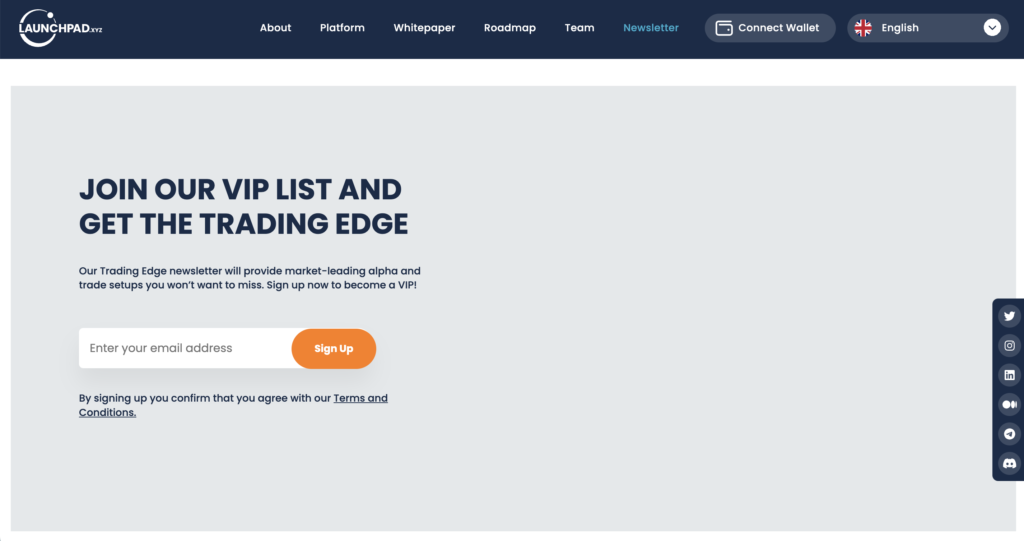
Examine and Analyze Performance
Regularly assess performance metrics like click-through rates, conversion rates, cost per acquisition, or return on ad spend (ROAS).
Optimize marketing campaigns using data insights, identify areas for improvement, and allocate resources efficiently.
By employing performance marketing strategies, you can enhance your marketing endeavors, increase campaign efficiency, and attain improved outcomes for your tokenization/Web3 project. In subsequent sections, we will delve into the significance of trust and credibility building
Conclusion - Marketing strategy in Web3
To succeed in the competitive realm of tokenization and Web3 projects, a well-structured marketing strategy is crucial. Gaining an understanding of the environment, identifying your target audience, establishing clear goals and KPIs, formulating a distinctive value proposition, and creating an interactive online presence help enhance visibility and achieve objectives. Utilizing performance marketing tactics and concentrating on trust-building measures further augment your project's potential. Adopt these approaches to ensure your project thrives in this evolving sector.
Nextrope Tokenization Launchpad Platform
Nextrope Launchpad Platform is a White Label solution in a Software-as-a-Service model that helps you launch your project within a month and fundraise with Initial Coin Offering (ICO) or Security Token Offering (STO).
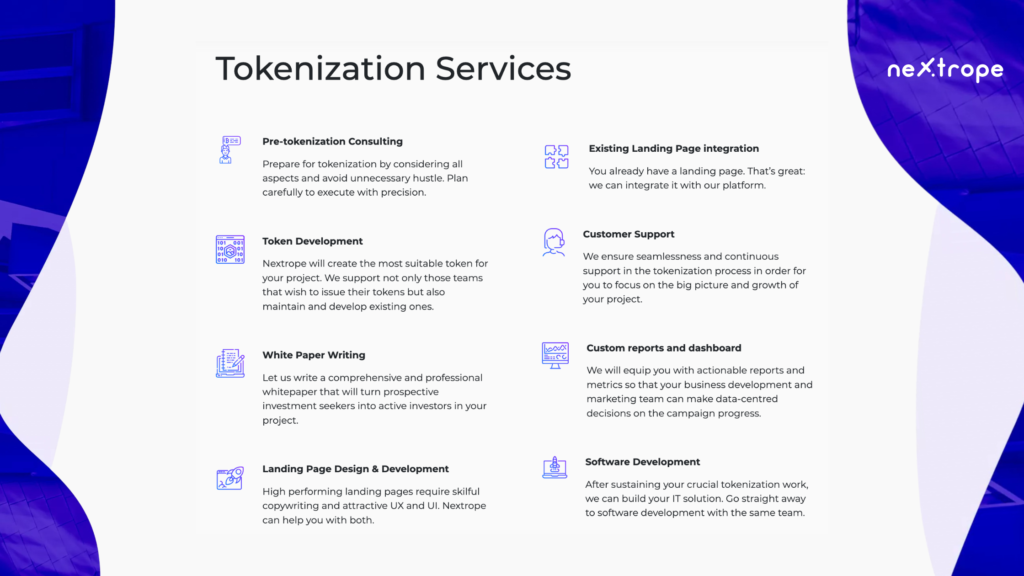
Our platform allows you to participate in the broad financial market of digital assets. Expand your reach and find investors globally. Tokenize your project and start raising capital within a month!
 en
en  pl
pl 
